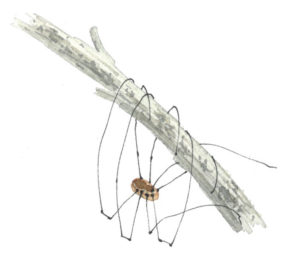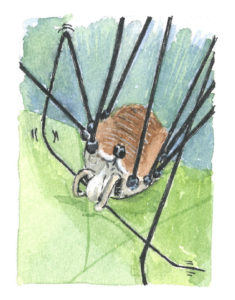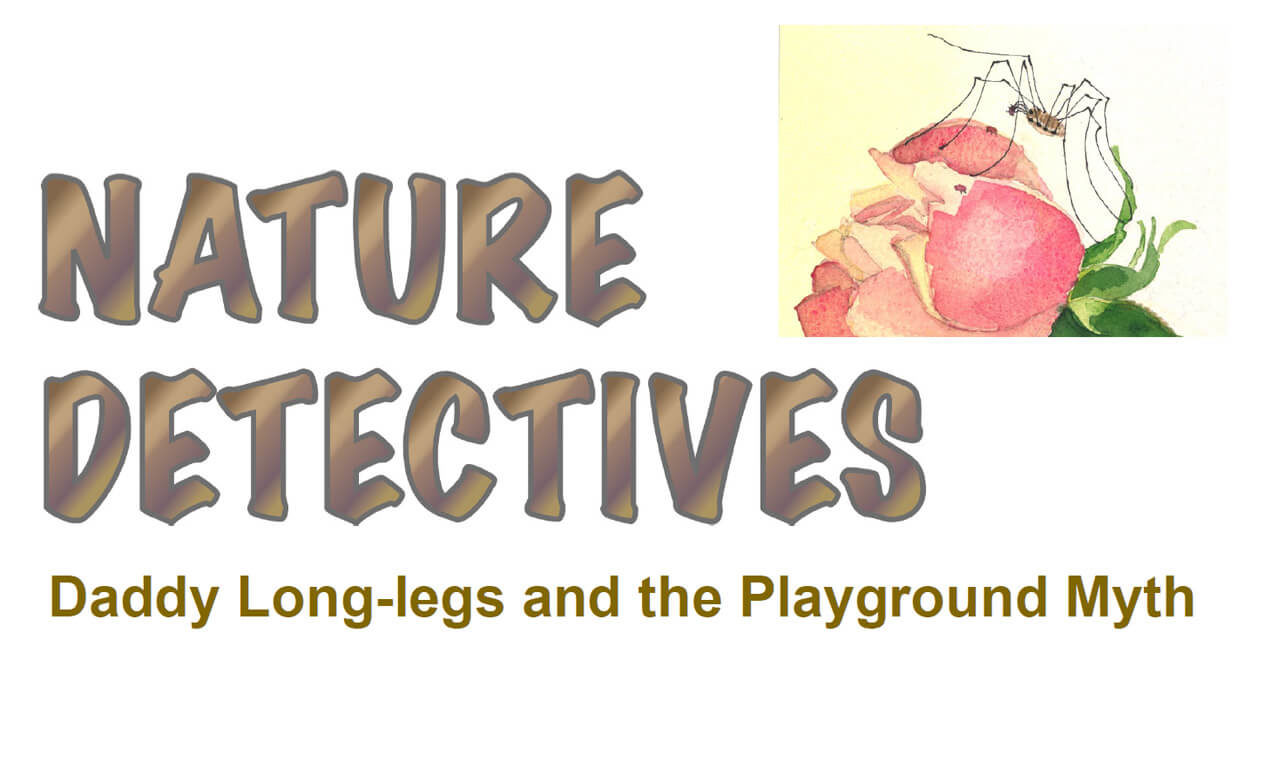Have you ever wondered about daddy long-legs? You might know they aren’t spiders, even though they certainly resemble spiders with their eight flimsy legs.

Maybe you spotted a daddy long-legs on the school playground? They are fairly common to find in shady places such as under a slide, beside the building, or on a wall.
Possibly you heard a kid say, “They are the most poisonous spider in the world!” Then abuddy countered, “Yah, but they have such a tiny mouth, they can’t bite people.” Perhaps your friend worried, “What if that one has a bigger mouth?!”
The Myth Heard Around the World
Incredibly, that myth about them being deadly has spread all over the world. (Well, not in Antarctica…no daddy long-legs there.) Truth is, daddy long-legs cannot inject deadly toxins because they have no glands for making venom nor any fangs for venom delivery. No venom, no fangs, no worries for humans.
Many people mix up the words poisonous and venomous. Poison is something unsafe to swallow such as a toxic plant. Venom is toxin that some snakes and other critters make in glands in their bodies to inject with their bite or sting.

Spiders do have venom glands and fangs, usually teeny fangs and most do not have very toxic venom. Spiders have two very obvious main body parts divided by a narrow middle, and spiders have three or four pairs of eyes. (Remember daddy long-legs aren’t spiders.)
Daddy long-legs have one pair of light-sensing eyes, placed on a miniature tower on the front of their body. The body of a daddy long-legs slightly resembles a round raisin held up on skinny legs. They don’t have a narrow waist, and their two main body parts are hidden under their exoskeleton.
Without venom or fangs, daddy long-legs have survived just fine on earth for over 400 million years.
In fact, fossils of daddy long-legs that lived 100 million years before dinosaurs look pretty much like those in Boulder County today.
Continue Reading & Download the Print Edition
Nature Detectives Library
Every past issue of Nature Detectives can be found in the Nature Detectives Library!


